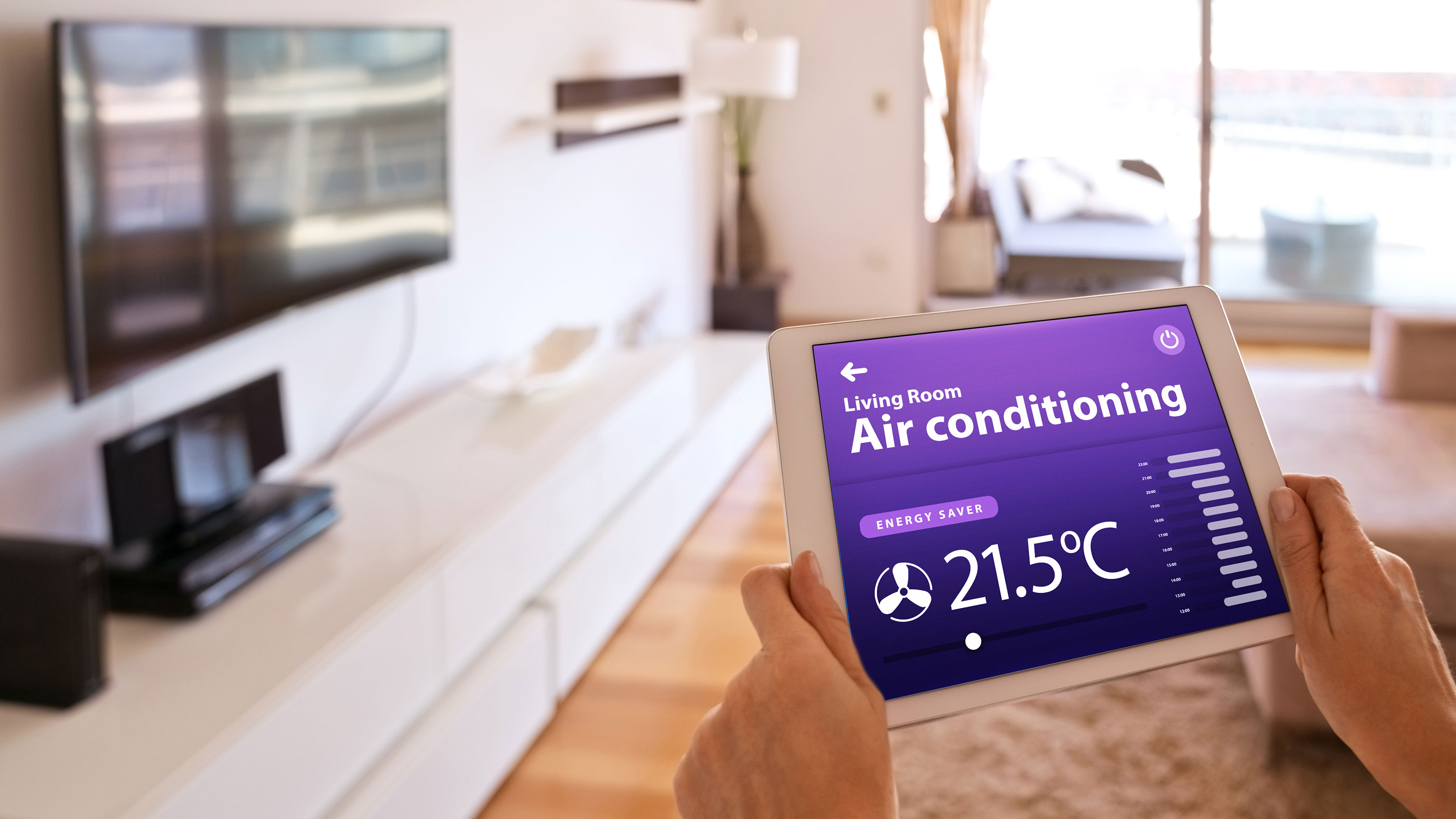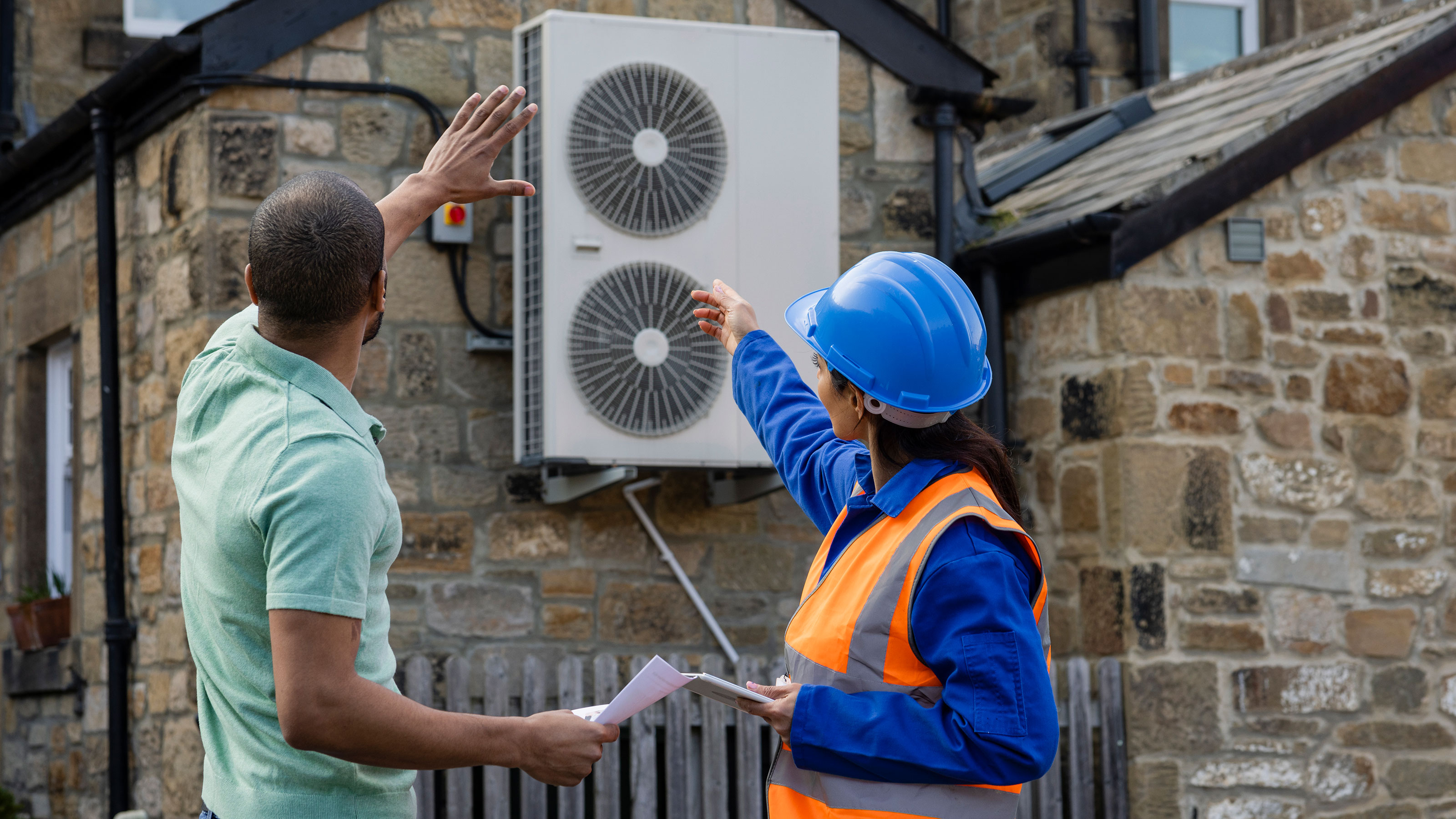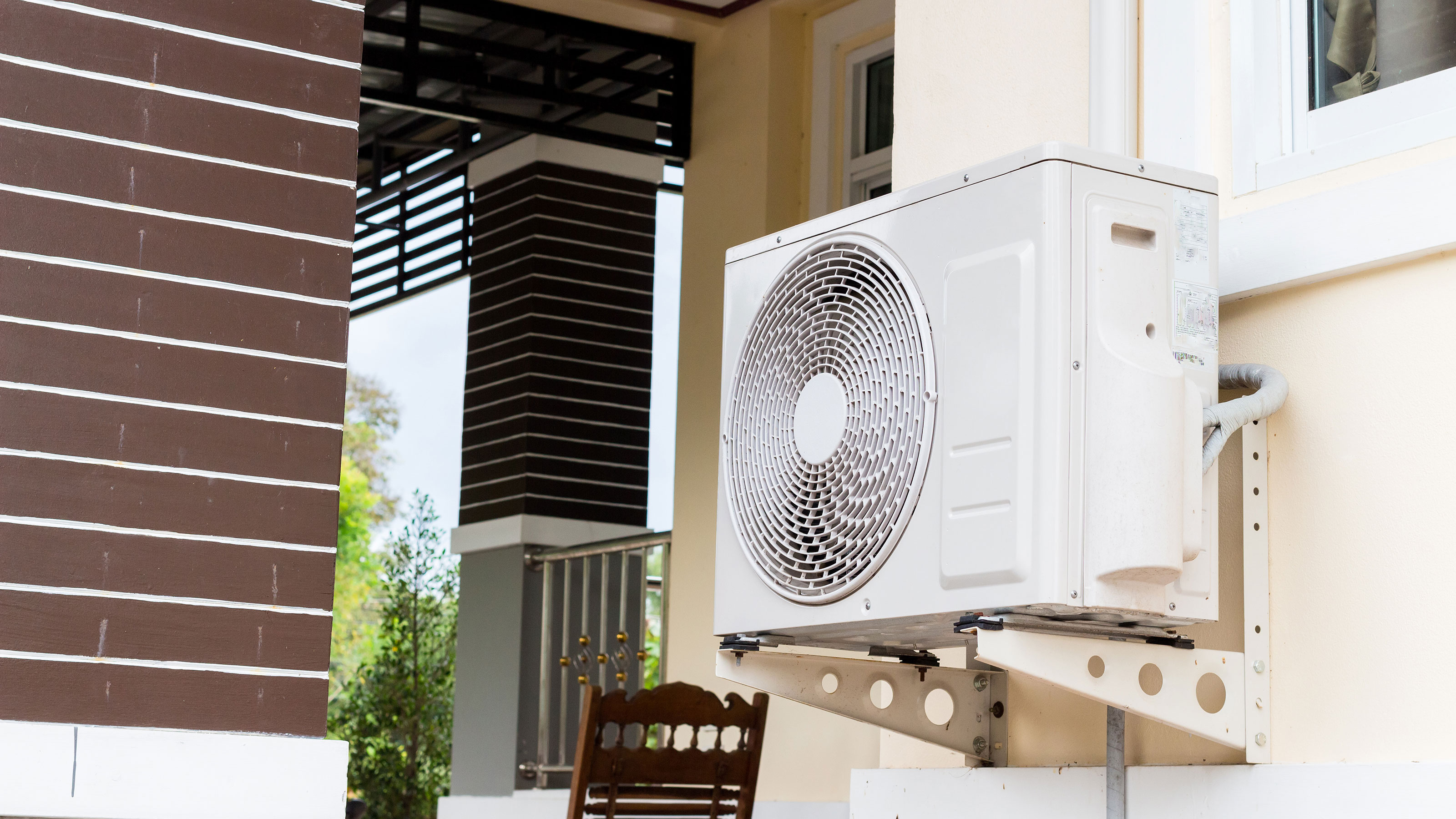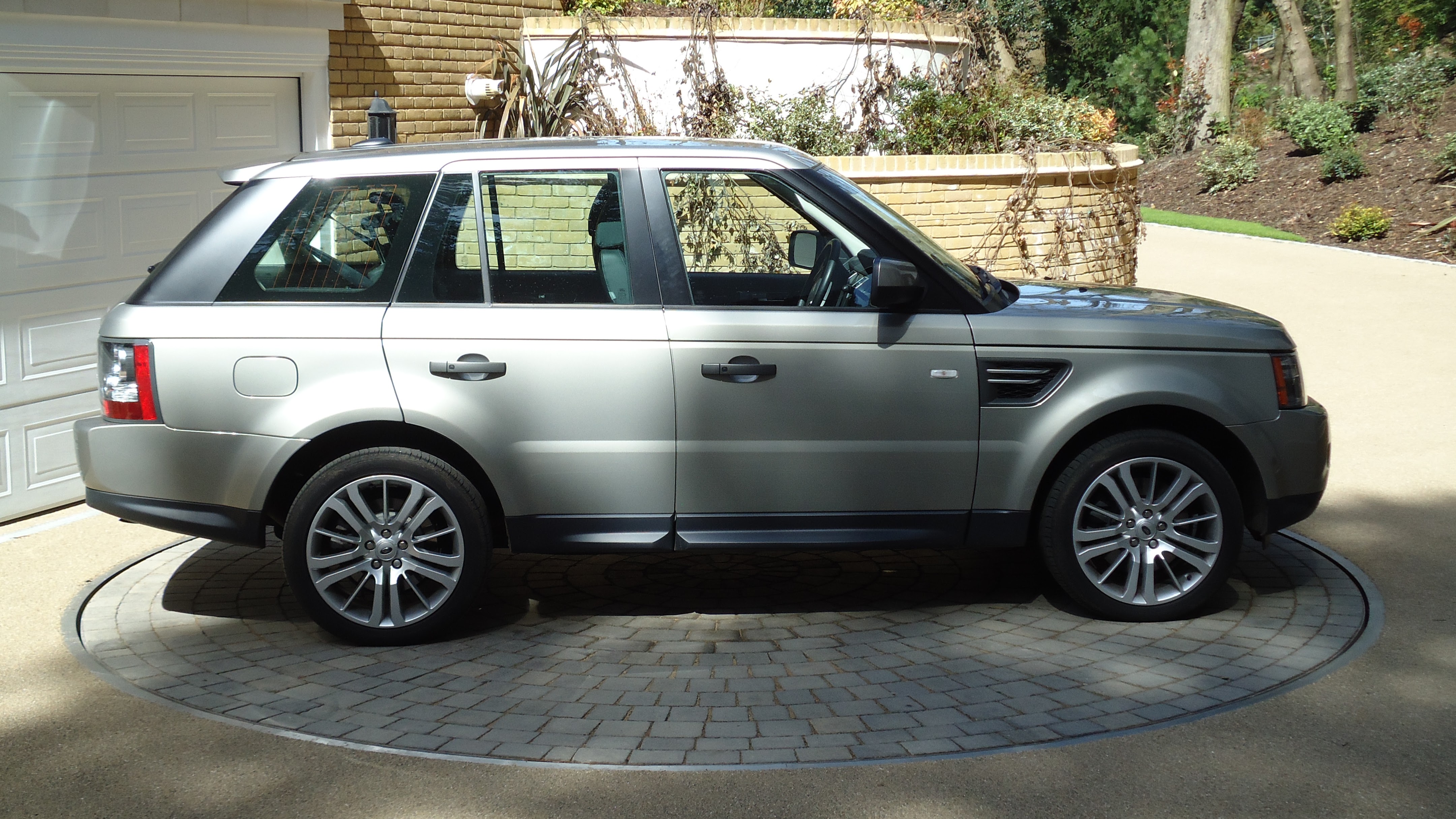Heat Pumps vs Air Conditioners: Which is Better For Your Home?
Debating heat pumps vs air conditioners for your home? Our heating expert David Hilton compares the efficacy of both systems for home heating and cooling

If you’re debating heat pumps vs air conditioners for your house then it’s important to understand the differences, and similarities, between the systems. The systems are more similar than you might think: some heat pumps can cool homes and some air conditioners can provide heating.
Air source heat pumps and ground source heat pumps are growing in popularity as a low-carbon heating alternative but heat pumps are not a new technology. Since the 1940s when American inventor Robert C Webber noted that heat was being rejected on cooling systems, heat pumps have been used to deliver heat to homes. The technology has improved since then and our understanding of how they work has dramatically increased.
Meanwhile most of us are familiar with air conditioning in our workplaces, in our cars and also in hotels and many shops. And while we usually anticipate cooling from air conditioning, air conditioners are often now able to heat as well.
Here’s what you need to know about how both systems work, and how to know which is the most effective option for your home’s requirements.
Can Air Conditioners Heat a Home?
Air conditioning units work by passing warm air over pipes or plates that have very cold refrigerant in them. The cold refrigerant absorbs the heat from the air and cools it, delivering the waste heat to the outside of the property.
They have a high turnover of air and the air can cycle through a unit many times, slowly decreasing in temperature each time it goes through. Humidity is also released from the air in the heat exchanger (the part of the air conditioner that extracts the heat from the air passing through it) and the air conditioning unit will have a built-in condensation pump to remove the water.
But some air conditioners which use a reverse cycle take low grade heat from the air in the room and enhance it before returning it to the air in the room. The resultant cooling is then rejected via the outdoor fan unit, meaning only the heat travels through the air.
Both air conditioners and heat pumps are classed as HVAC (heating, ventilation, and air conditioning) systems, and air conditioners are often referred to as air to air heat pumps. While they operate in the same way to air source heat pumps, they function the other way round when providing heating.

Can Heat Pumps Cool a Home?
Perhaps the first consideration to address before answering this question is to examine the different types of heat pumps.
In a wet central heating system, such as radiators or underfloor heating, heat is given up to water. This is the case with air to water heat pumps, commonly known as air source heat pumps. But if the heat pump gets its heat from the ground then this would be a ground to water heat pump, also known as a ground source heat pump.
The real difference between air source heat pumps and ground source heat pumps is the heat exchangers, which ultimately is the unit's ability to deliver heat (or cooling) to the home.
At the heart of each heat pump is a vapour compression cycle, often referred to as the refrigerant cycle. Low grade heat is absorbed by very cold refrigerant liquid which then ‘boils’ and becomes a gas. This ‘boiling point’ of the refrigerant in many heat pumps and air conditioning units is very often around -50°C which means that even outside air temperatures of -10°C will still ‘boil’ it.
Once it is a gas, the refrigerant passes into the compressor, and as pressure is applied to the gas it increases in temperature. The ‘hot gas’ now passes into another heat exchanger and heat is given up to the heating system as useful heat.
This vapour compression cycle is exactly the same as the one found in our fridges at home, or our air conditioners at work or in the car. The only difference is that we use the cooling as the useful element and the heat is rejected. You might say that the system is in reverse, so if you wanted to add a heat pump to your home, it is simply a case of working out whether you want the useful element to be cooling or heating.
Which System is Cheaper?
Air source heat pumps can cost up to £14,000 to install, while ground source heat pumps cost up to £15,000 depending on size and brand. And while heat pump grants exist to reduce these costs, it is still a significant outlay despite the potential to enjoy lower long-term energy costs.
Installing an air conditioning system costs around £1,200 per room, and installing the refrigerant pipes between the outdoor unit and the indoor unit can be a lot less disruptive than water-based central heating, as the pipes are only around 28mm diameter including the insulation. Air conditioning as a heating solution can indeed work, but you will need to think about how you intend to deliver your hot water.
Which Systems Provide Simultaneous Cooling and Heating?
An air source heat pump can offer cooling and an air to air heat pump (air conditioning unit) can offer heating, but there are a number of caveats. Significantly, the efficacy of each process does not deliver the same results in both technologies.
So why can’t we have a system with both types of heat exchangers: air to air and air to water? Well, you can! It is known as Variable Refrigerant Flow (VRF), Variable Refrigerant Volume (VRV) or Time Division Multi (TDM), depending on which manufacturer you choose.
These units are effectively air conditioning units with an additional ‘hydrobox’ which allows for the heat to be transferred to water. You therefore have air to air and air to water in one unit. The simpler versions of these units can only do heating or cooling at one time but some manufactures have 3-pipe (or ‘heat recovery’) versions that allow heating and cooling at the same time. You can therefore have cooling in the bedroom while you heat your hot water.
These types of 3-pipe heat recovery systems have been installed in many hotels nationwide and we are now seeing smaller systems entering the market that would be suitable for many domestic homes.
As they are not true heat pumps as defined by the UK industry they are not currently eligible for any incentives under the Boiler Upgrade Scheme. But given that you now can have heating and cooling (both as useful energy) in one single system, maybe grant incentives are less enticing considering the energy benefits.

Which is the More Effective Heater?
The heating process in an air source heat pump and air conditioner is very similar, but the key difference is that an air source heat pump delivers heat to water.
Water has the capacity to hold more than four times more energy in the same volume as that of air, which makes the distribution of heat a lot simpler. Moreover, you will not experience the noise of the air movement that is often associated with air conditioning units.
An air source heat pump also has the ability to heat the water in the central heating system as well as the water required for bathing, showering and washing.
Many homeowners do use air conditioners as their primary heating systems, but make sure you are happy with the associated air movement and the way the heat is distributed. Ducted air to air heat pump systems can be used to mitigate the noise impact from the fans but air movement on its own can also have associated sounds.
Which is the More Effective Cooling Option?
For really effective cooling there is no replacement for proper air conditioning.
David Hilton
Due to the condensation risk on emitters and system pipework it is not often advised to add cooling to existing central heating systems, but with careful planning plus good insulation and installation details on a new system, the background cooling could be a welcome bonus on hot summer days.
For really effective cooling there is no replacement for proper air conditioning. But if you want cooling from an air source heat pump you will need a model that can operate in reverse. You will need to find out from the manufacturer if a particular model can offer a reverse cooling function as not all models from all manufacturers have this functionality.
You might also need to install fan convector radiators that are designed for cooling - these allow small fans to blow air over the heat exchanger, and will therefore require more power. Standard radiators and underfloor heating will rely on convection to cool the air which can be a very slow cooling process.
If you drop the temperature of the water in your radiators or underfloor heating below 17°C then run the risk of condensation forming on the surface of the emitter. At best this will leave a puddle under the radiator, but at worst the puddle could damage the floor below; the condensation could cause excessive corrosion on the emitter or building fabric; or you could have wet patches on floors that might deteriorate the flooring materials or leave a slip hazard.
The other issue is that the water in a heat pump will not usually be any cooler than 15°C, which may not offer much cooling without air movement. Similarly, air conditioning systems will not target temperatures cooler than 15°C but they deliver cooling with a high turnover of air.
At best the cooling effect from an air source heat pump in standard emitters is only tempering the temperature in the air.
Get the Homebuilding & Renovating Newsletter
Bring your dream home to life with expert advice, how to guides and design inspiration. Sign up for our newsletter and get two free tickets to a Homebuilding & Renovating Show near you.
David is a renewables and ventilation installer, with over 35 years experience, and is a long-standing contributor to Homebuilding and Renovating magazine. He is a member of the Gas Safe Register, has a Masters degree in Sustainable Architecture, and is an authority in sustainable building and energy efficiency, with extensive knowledge in building fabrics, heat recovery ventilation, renewables, and also conventional heating systems. He is also a speaker at the Homebuilding & Renovating Show.
Passionate about healthy, efficient homes, he is director of Heat and Energy Ltd. He works with architects, builders, self builders and renovators, and designs and project manages the installation of ventilation and heating systems to achieve the most energy efficient and cost effective outcome for every home.

